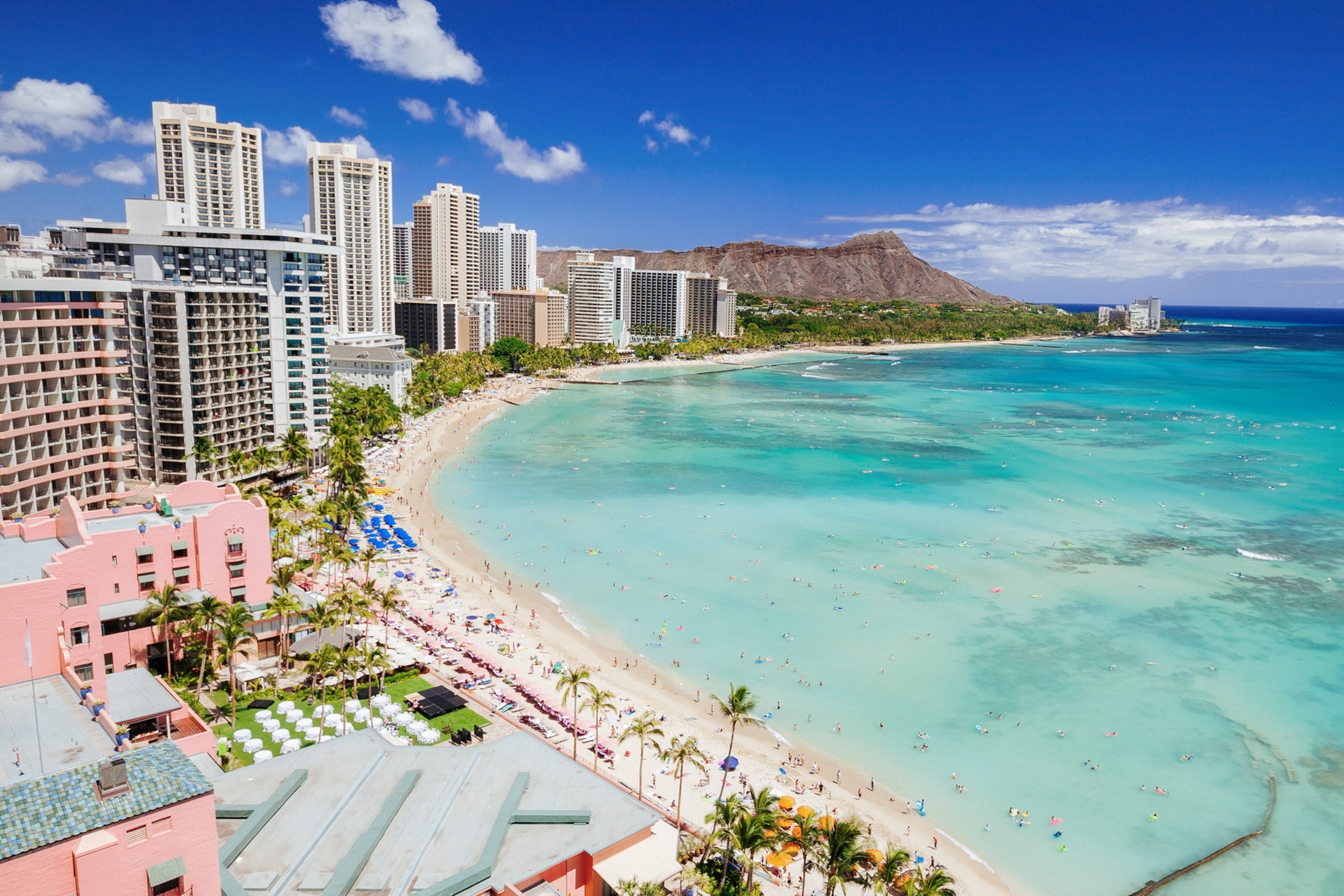Hawaii is one of the most popular vacation spots on the planet, with countless families and individual vacationers enjoying the impressive tropical islands throughout the year. It is a fine choice of vacation destination, offering something for everybody no matter what you are looking for.
However, like any holiday destination, you want to go at the right time. If you do not have a specific time in mind, then it is easy to assume that it does not matter, but the season, month, and even day that you visit can have a major influence on several parts of your vacation plans.
If you are planning to go to Hawaii at some point this year, then you will want to plan ahead and choose the best time for your trip.
When is the best time to go to Hawaii, and how should you decide on an ideal time to visit if you are not sure?

The Basics of Visiting Hawaii
Hawaii is a great vacation spot, and the state has become famous for offering a tropical experience at almost any time of the year. However, it is easy to get swept up in your own idea of how it looks – if you are planning a vacation, it is important to know the reality of what you will be experiencing.
Remember that there are no certainties when it comes to vacations. There is always a chance that you will accidentally visit during a period of great weather or end up taking a vacation on the same day as the lowest total visitor numbers for that year. Still, with planning, everything becomes easier to handle.
Weather
Hawaii’s best weather tends to appear between June and September, although this heavily depends on the exact time that you are going. You can expect comfortably warm temperatures and low precipitation for most of the year since it only really experiences two seasons instead of four.
If you have to travel outside of the peak weather times, you are not going to be stuck with heavy downpours or strong chills. One of Hawaii’s biggest strengths is the fact that you can get the same experience for almost the entire year, even during winter.
Whenever there is rainfall, it usually is not as vacation-ruining as many other countries. The warm weather in Hawaii can actually make it a welcome change of pace, and you will have shelter available if you really want to avoid getting soaked while out on the beach.

Crowds
When you visit Hawaii, two things are almost guaranteed – warm sunlight and plenty of crowds. Hawaii’s status as a prime vacation destination sees it gathering a lot of tourists all year round, even outside of the unusual peak months. If you are going, then a lot of other people might be too.
Expect to see the most visitors around the time when Hawaii is hottest, which would usually be the regular summer season. In general, Hawaii’s tourism will be at its strongest in summer, but the average visitor count will drop as you get closer to winter.
This is not a problem, but it means that you will need to expect quite a few other visitors during your vacation. If you are going at off-peak times but want to avoid crowds, it can help to try and find less prominent resorts or hotels to stay in.
Either way, Hawaii is always going to be popular. It is just important to recognize that fact since many people can underestimate how hard it might be to book accommodation if you do not plan ahead and get everything in place ahead of your visit to the islands.
Wildlife
While Hawaii does not have a huge selection of land-based animals to snap photographs of, there are a lot of opportunities to enjoy the sea life near the islands’ coasts. For example, whales tend to migrate closer between December and April, making the islands some of the best places to watch them from up close.
While green sea turtles can sometimes be dangerous if you disturb them, they tend to use summer as their nesting season, meaning that you can increase your chances of spotting them. As long as you are not getting too close, you can even take some pictures with them.
The area’s wild dolphins usually prefer cooler and harsher water. If you want to swim with them, or at least see them in the distance while you are on the beach, then going between November and March usually increases your odds of spotting a few while you are enjoying your vacation.

Budget
Budget concerns can be a very common reason to look for a cheaper flight, and that often means going at off-peak hours or trying to find a better time to fly over.
An intermediate period between peak and non-peak flights to Hawaii happens between March and May, then later from September until around Thanksgiving Day. These are some of the better times to visit if you want to avoid peak tourist numbers, but still prefer to arrive at tourist-friendly times.
However, you should also consider holidays that might bring more visitors over. Spring break can often lead to an increase in prices and higher traffic, meaning that you would need to pay more to visit Hawaii and then likely to pay even more to book proper accommodation.
The off-peak seasons are usually ‘awkward’ times where there are not many holidays, such as earlier in the year before summer can kick in. Alternatively, you can try to head to Hawaii in winter – this might help you avoid many of the larger crowds that you would see in summer.
Remember that Hawaii is warm in every season, so people will always be visiting for the perennial tropical conditions. Most islands never really drop below 77 degrees Fahrenheit (or 25 degrees Celsius) unless there is a dramatic shift in weather conditions and precipitation.
Events
Visiting for specific seasonal events can be a valid reason to choose a certain time for your vacation, but it depends on what you are looking for. While most activities are open all year round – since the islands have relatively consistent weather – some only happen at particular times.
Spring has a lot of festival-style events going on, like the Honolulu Festival (which happens in March each year) or the Lantern Floating Festival that takes place on Memorial Day. If you want to enjoy something with a more cultural edge, this is the best time to visit.
Summer has major events such as the Prince Lot Hula Festival, as well as specific activities that are meant to capture the summer tourist spikes. It is also the warmest time to visit, meaning that you will often see a lot more outdoor activities on offer than in other seasons.
Fall has the famous Hawaii Food & Wine Festival, something that can draw in a huge amount of guests. If you are interested in food and do not mind crowds, then this can be a great time to visit since it tends to only run during the Fall season.
Winter, surprisingly, is all about surfing. This is the month where you will get surfing competitions such as the Vans Triple Crown on Oahu Island – even if you are not taking part in them yourself, it can be a nice thing to watch from the comfort of a warm beach.

Which Month is Best?
Seasons are a very general way of planning a vacation, but that does not get into the specific niche details that you need. With twelve months to a year, that is a lot of different options for visiting, and each month has its own unique weather conditions and events that make it stand out from the others.
There is also the fact that every month will bring a different amount of visitors, with some months’ visitor numbers being much higher than others. Hawaii is a very popular destination, but specific months can be even more packed with tourists than you would have originally expected.
January
As long as you do not visit on New Year’s Eve or New Year’s Day, then January tends to be one of the months with a lower visitor count. People are usually going back to work or enjoying their post-Christmas time off, although some visitors use it as a good time to avoid larger crowds.
Since January is one of the wet months, you will need to expect some rainfall here and there. However, if you want to enjoy Hawaii at off-peak times, then you can use this month to dodge the higher visitor counts that usually arise as you get closer to summer. You will also get to see more humpback whales than normal.
February
February trades some of January’s rainfall for a bit more wind, but it is still a nice, calm time to visit. These winds mean that you can get some great aerial tours via helicopter trips or enjoy some less-intense surfing competitions.
March
March is hotter than the previous two months but is one of the two wettest periods in the state (the other being November). You can spot humpback whales quite easily, just like in January, but the month itself is a simple off-peak time that does not have that much special about it.
This is hardly a bad thing. It just means that you are avoiding larger crowds or periods where tourist levels might suddenly spike. Just watch out for occasional small storms.
April
April heats up quickly, meaning that you can usually leave your warm clothes behind. Not only does this add to the state’s tropical feel, but it can make your stay a lot more comfortable, especially if there is still a constant slight breeze.
May
May opens up more activities than any of the previous months, as well as calming down the water and offering you some nice, consistent temperatures. If you want to go surfing, or just like watching it, then this is the ideal time to visit – but it is also starting to approach peak visitor numbers.
June
June is one of the hotter months, but it still avoids the absolute visitor peak. This can be a good time to plan a Hawaii vacation if you want to avoid massive summer crowds, helping you get a peaceful holiday without as much stress or as many people to navigate around.
July and August
Both of these months collectively make up the summer peak period, and this brings a lot of holidaymakers with it. You can still avoid crowds if you go to less popular or more isolated areas, but you should still expect a large focus on tourism.
This might be a more expensive time to visit, but it also has the most activities open. As a peak vacation season, you will be able to get most of the typical vacation experiences, as well as plenty of Hawaii-specific activities.

September
September is the end of the summer peak, but it will take a while for the tourist count to drop completely. The heat dies down a bit, and the water becomes a lot clearer, making it the perfect time to relax indoors or enjoy the marine life just off the coast of Hawaii’s many islands.
October
October drops the crowds even further, but the temperature will usually be fairly warm still. This can be the ideal time to visit if you just want to see Hawaii and do not care about specialized events or warm summer weather.
November
November is very wet, so you should expect a lot of rain. However, depending on where you are in the state, there can be a lot of nature walks and recreational areas that are fairly sheltered, making it a great time to go exploring.
December
December is the beginning of the whale season, meaning that you can see humpback whales far more often – this carries over into the start of the next year as well. Crowds are almost completely absent in the lead-up to Christmas, but a few families might be celebrating there.
When should I go?
There is not the best time to get to Hawaii that suits everybody. Sometimes, you will want a vacation that avoids large crowds, but other people may specifically want to go during the peak seasons.
It is a good idea to think about what you want from your vacation. The information here will help inform your planning process, but you should make sure that you tailor your vacation plans around your own preferences and the kind of experience that you are looking for.
More about our TFVG Author
A seasoned traveller, Dad, and avid sports tourist, James foundered The Family Vacation Guide to share his expert vacation experiences- especially when it comes to being a travelling family man.
Featured in Travel articles such as Travel + Leisure, TripSavvy and SFGate, you know you're reading some of the best vacation tips online.





